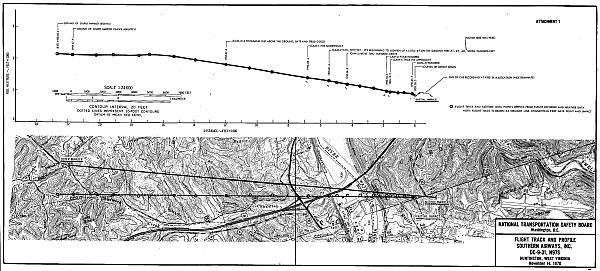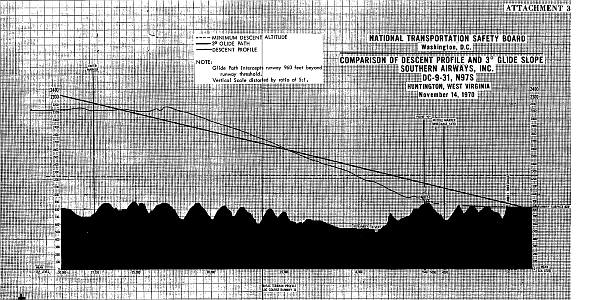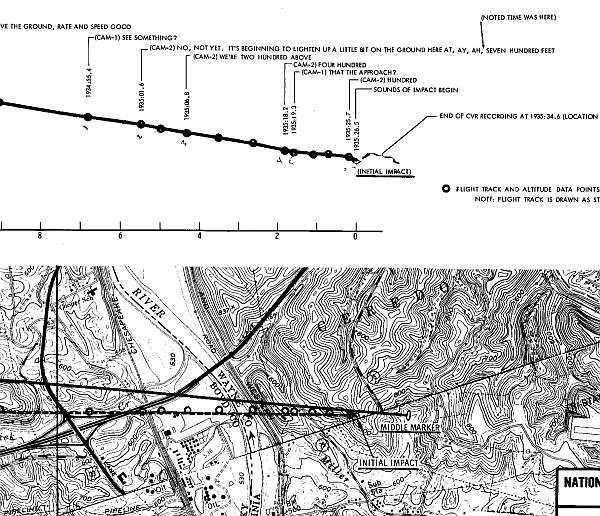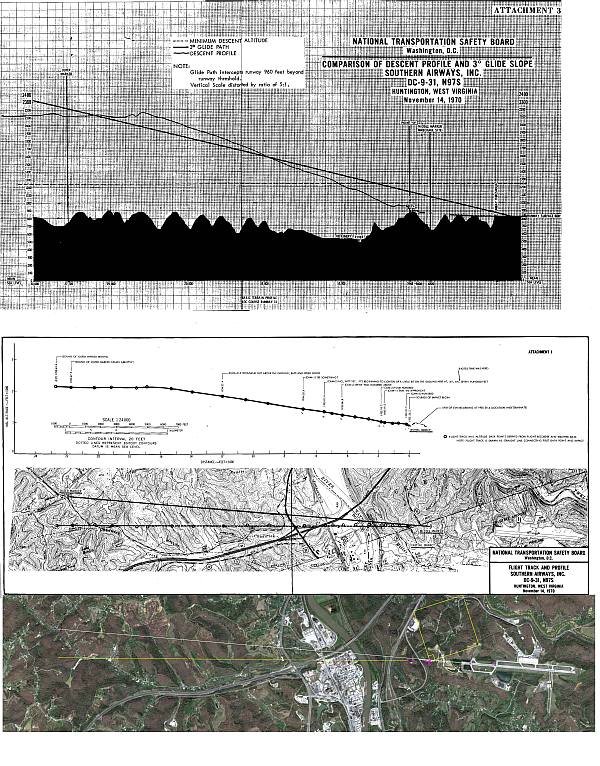Katastrofa DC-9 koło lotniska Tri State (1970)
Lądowanie według radiowysokościomierza. Zderzenie z drzewami na szczycie wzgórza. Utrata końcówki prawego skrzydła. Półbeczka. Uderzenie w ziemię w pozycji na plecach. Całkowita dezintegracja. Pożar. Nikt nie przeżył...
Samolot DC-9 linii Southern Airways 14 listopada 1970 roku uległ katastrofie koło lotniska Tri-State.
Nigdy nie ustalono bezpośredniej przyczyny katastrofy. Komisja NTSB uznała, że najbardziej prawdopodobną przyczyną był błąd załogi, polegający na korzystaniu z radiowysokościomierza zamiast wysokościomierza barometrycznego na podejściu przebiegającym nad mocno pofałdowanym terenem.
Samolot, lecąc w nocy, we mgle i mżawce, zaczepił o drzewa rosnące na szczycie wzgórza o wysokości 271 m n.p.m., w odległości 1650 metrów od (ówczesnego) początku pasa startowego. W wyniku zderzenia z drzewami starcił kawałek prawego skrzydła, zaczął obracać się przez prawe skrzydło na plecy i spadł w odwrócone pozycji 380 metrów dalej na dno dolinki w miejscu położonym na wysokości 197 metrów n.p.m., w pobliżu środkowego markera, 1260 metrów przed (ówczesnym) początkiem pasa startowego (pas jest położony na wysokości 252 m n.p.m., w 1970 roku miał długość 1560 metrów, od tamtego czasu był dwa razy przedłużany w kierunku zachodnim i dzisiaj ma 2200 metrów długości). Gazety opisywały, że samolot, w wyniku gwałtownego pożaru, zmienił się w pył, przypominający szary puder.
Na zdjęciu zaznaczone są dwa żółte kwadraty, jeden o boku 1 kilometra, drugi o boku 100 metrów. Służą jako skala.
Artykuł w wikipedii (po angielsku)
Wykresy z raportu komisji badającej tę katastrofę




Southern Airways Flight 932 Crash Site
On the rainy evening of November 14th, 1970, Southern Airways Flight #932, a Douglas DC-9 commercial jet, left Kinston, North Carolina, at the scheduled time for the charter flight, consisting of the members of the Marshall University football team, its staff, supporters, and flight crew. The flight then proceeded to Huntington, West Virginia, without incident. The flight crew, led by Captain Frank H. Abbot and First Officer Jerry Smith, had established radio contact with the air traffic controllers at the airport at 7:23 PM with the announcement that they were to descend to 5,000 feet. The controllers had advised the crew that there was "rain, fog, smoke and a ragged ceiling" making landing more difficult but not impossible. At 7:34 PM, the airliner's crew reported passing the Tri-State Airport's outer marker for the runway; the controller gave them clearance to land.
The airliner was on its final approach when it collided with the tops of trees on a hillside just over a mile west of the runway.
Having struck the wooded hill just a mile short of Runway 11 on the western side of the Tri-State Airport in Ceredo, West Virginia, plane burst into flames and created swath of charred ground over a thousand feet long. The resulting fire burned intensely, reducing portions of the wreckage into a "powder-like substance", according the newspaper accounts of the time.
All seventy-five people on the flight were killed, including the entire flight crew. The plane has been specially chartered, and was carrying home thirty-seven members of the Marshall University "Thundering Herd" football squad, eight members of the coaching staff, and twenty-five fans and supporters of the team, after a 17-14 loss against the East Carolina University "Pirates" in Greenville, North Carolina.
The exact cause of the crash was never fully determined by the National Transportation Safety Board, but the aircraft experienced no reported difficulties as it descended below the published glide path. The chairman of the National Transportation Safety Board, John H. Reed said regarding the mishap: "If it hadn't been for those trees, he probably would have made it. It was that close."
In 2006 a movie was made about the air disaster "We are Marshall".
© Prószyński Media 2011–2016



